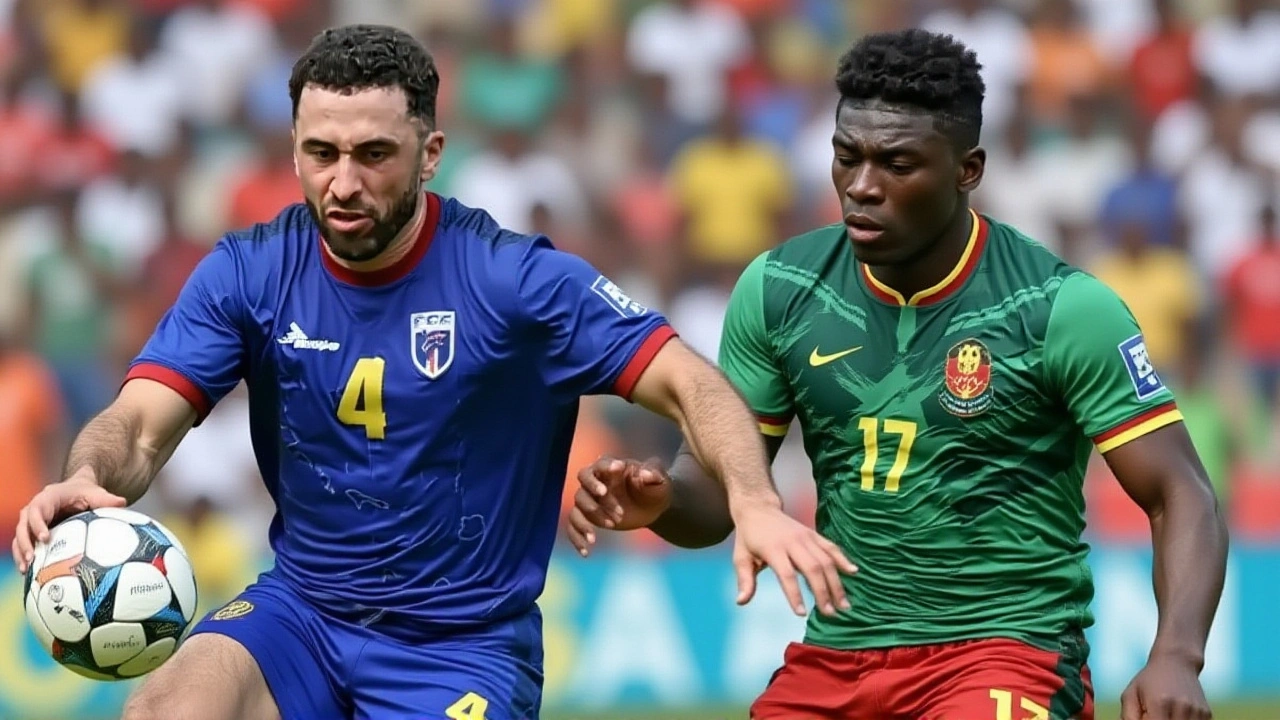
Cape Verde Stages Late Comeback to Draw 3-3 with Libya in World Cup Qualifier
Cape Verde rallied from 0‑2 to draw 3‑3 with Libya in a World Cup qualifier, extending their Group D lead to five points and keeping a historic second World Cup bid alive.
When talking about Tripoli Stadium, a 65,000‑seat multi‑purpose arena in Libya’s capital, built in 1970 and modernised several times. Also known as Al‑Mansour Stadium, it serves as the main venue for professional football, the world’s most popular sport where two teams compete to score goals and hosts national team fixtures. The stadium’s concrete bowl, floodlights and grass pitch make it a key landmark for both local fans and international visitors.
The stadium’s identity is tightly linked to Al Ittihad Club, one of Libya’s most successful football clubs, regularly playing home games at Tripoli Stadium. Because the club often competes for the Libyan Premier League title, the venue sees intense crowds, chanting supporters and high‑stakes matches. This relationship means the stadium not only provides a playing surface but also shapes the club’s brand, recruitment and revenue streams.
Within the Libyan Premier League, the top tier of professional football in Libya, featuring 12 clubs fighting for the championship each season, Tripoli Stadium acts as a neutral ground for decisive fixtures and cup finals. Its large capacity allows the league to showcase marquee match‑ups, drawing media attention and sponsorship deals. The venue’s modern locker rooms and press facilities meet CAF standards, letting the league host high‑profile games without needing a separate stadium.
On the continental stage, Tripoli Stadium is approved for CAF competitions, tournaments organized by the Confederation of African Football, including the Champions League and the African Cup of Nations qualifiers. When Al Ittihad or the national team qualifies, the stadium becomes a hub for African football fans, offering a stage for players to test themselves against clubs from Egypt, Tunisia, South Africa and beyond. These events boost the local economy, fill hotels and create a buzz that lasts weeks after the final whistle.
Running a venue of this size brings specific challenges. Maintenance crews must manage the grass surface, ensure lighting meets broadcast requirements, and keep safety protocols up to date. The stadium’s infrastructure also supports non‑sporting events, such as concerts and political rallies, thanks to its adaptable seating and sound systems. This versatility turns Triplie Stadium into a cultural center, not just a sports arena.
Fans play a huge role in the stadium’s atmosphere. The chants, the wave, and the collective roar during set‑pieces create a psychological edge for home teams. Studies show that louder crowds can influence referee decisions and even player performance, making Tripoli Stadium a true “12th man” for Al Ittihad. Local vendors line the concourses, offering everything from chilled tea to grilled kebabs, turning match days into a community festival.
Recent upgrades focus on enhancing spectator comfort and safety. New seats replace worn‑out sections, a modern ticketing system reduces entry queues, and upgraded fire‑suppression equipment meets international standards. These improvements aim to attract more international matches, which in turn raise Libya’s profile in global football circles.
Below you’ll find a curated list of recent reports, match highlights, and analysis that touch on Tripoli Stadium’s role in domestic leagues, continental tournaments, and community events. Whether you’re a fan, a sports journalist, or just curious about how a single stadium can shape a city’s football culture, the articles ahead offer practical insights and up‑to‑date information.

Cape Verde rallied from 0‑2 to draw 3‑3 with Libya in a World Cup qualifier, extending their Group D lead to five points and keeping a historic second World Cup bid alive.